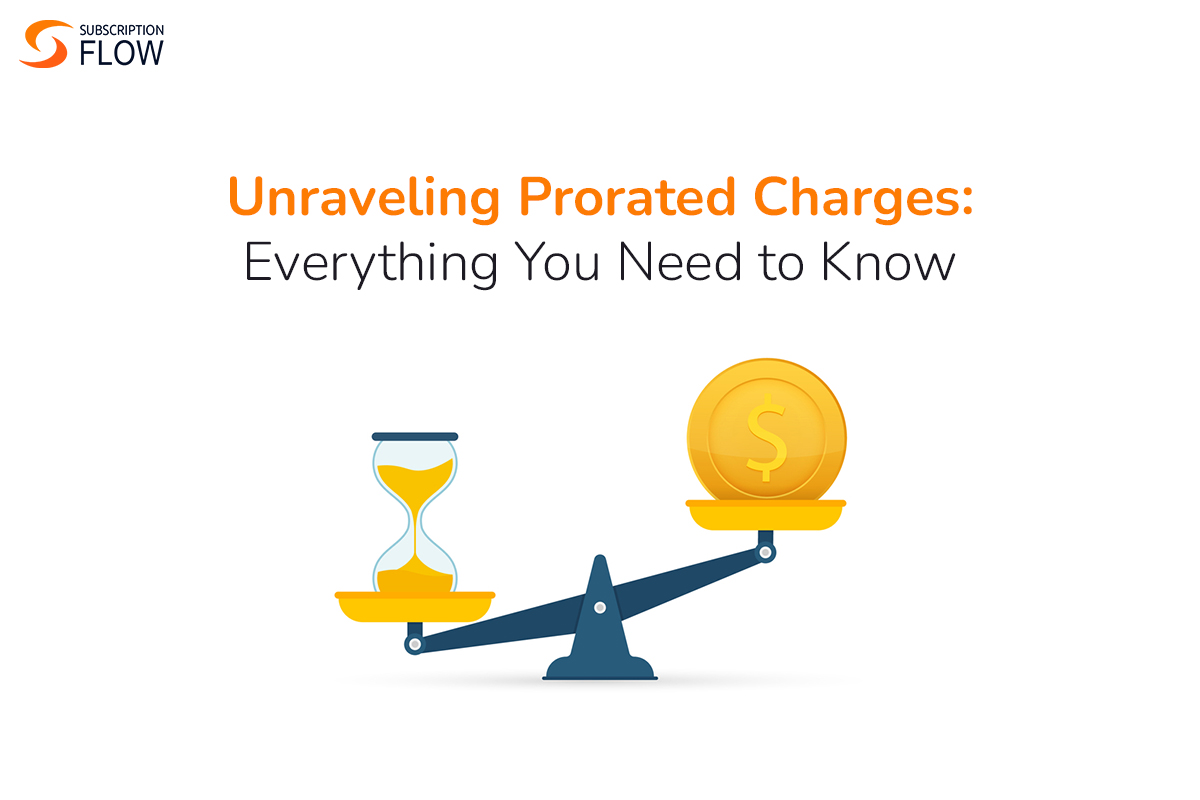
Unraveling Prorated Charges: Everything You Need to Know
Say your Marketing and Sales teams successfully nurture a promising lead, and you acquire a new subscriber. The customer chooses Plan A, priced at $300, gets charged at the start of the month and goes live.
Hurray!
But on the 15th day of their subscription, your customer decides they don’t have much use for some of the added features and functionality offered by Plan A and decides to downgrade to Plan B priced at $200.
How would you track and charge this customer fairly?
Surely you can’t charge them for the price of Plan A for the entire month when they only used it for the first 15 days. Alternatively, you also cannot afford to low-ball and charge them $200 for the month, when they already availed 15 days of the pricier plan. This is where it becomes necessary to prorate charges.
In order to run a successful subscription business, it is crucial to understand proration, learn how it is calculated, and automate its calculation for the smooth execution of your billing, invoicing, and revenue operations. This blog will fill you in on everything you need to know.
What is a Prorated Charge?
The word proration comes from a Latin root meaning “in proportion to” and refers to the proportional cost incurred for a service that is used or provided for only a part of a billing cycle.
When you sign up for a service in the middle of a billing cycle or make changes to your existing plan during a billing cycle, the service provider is tasked with calculating and applying prorated charges to ensure that you are billed fairly for the period during which you have utilized their services.
Proration is vital to the smooth functioning of your billing and invoicing operations. The absence of an automated tracking system for proration can result in customer overcharges, inaccurate invoices, revenue leaks, and distorted revenue reporting.
How is Proration Calculated?
Let’s consider two scenarios to understand this calculation.
Scenario #1:
In our earlier example, you would need to prorate charges in a way that charges your customer different rates in the first and second half of the month. Calculating prorated charges involves dividing the cost of a plan by the number of days in the billing cycle and then multiplying that value by the number of days the Plan was active.
The calculation would look like this:
Plan A
$300 (monthly cost) / 30 (days in the billing cycle) = $10 (daily cost)
$10 (daily cost) x 15 (days utilized) = $150 (prorated charge)
Plan B
$200 (monthly cost) / 30 (days in the billing cycle) = $6.66 (daily cost)
$6.66 (daily cost) x 15 (days utilized) = $100 (prorated charge)
So, your customer owes you $150 + $100 = $250.
The extra $50 that they have already been charged will be credited to the next month and deducted from what they owe your business at the start of the next billing cycle.
Scenario #2:
Imagine a different scenario where the customer subscribes to a monthly internet plan that costs $50. You bill customers on the first day of each month. However, your customer signs up on the 15th of the month. In this scenario, they would only be using the service for half of the billing cycle. As a result, the charges for the remaining half of the month are prorated.
This once again involves dividing the monthly cost by the number of days in the billing cycle and then multiplying that value by the number of days remaining in the cycle.
The calculation would look like this:
$50 (monthly cost) / 30 (days in the billing cycle) = $1.67 (daily cost)
$1.67 (daily cost) x 16 (remaining days in the cycle) = $26.72 (prorated charge)
In this case, instead of being billed the full $50 for the month, your customer would only be charged $26.72, reflecting the portion of the month during which they utilized the service.
Why is Proration so Important?
For Customers:
Proration is significant for consumers for several reasons:
1. Fairness
Proration prevents both overcharging or undercharging, promoting fairness in billing practices and positively impacting the customer subscription journey.
2. Flexibility
Proration also allows consumers to make changes to their subscription plans at any time during the billing cycle without having to wait for the next cycle to take effect. This flexibility is beneficial when you need to upgrade or downgrade a service or when you initially sign up for a new service mid-cycle.
3. Cost Effectiveness
Prorated charges also give consumers greater control over their expenditures. If they decide to cancel a service before the end of the billing cycle, proration will ensure they are not billed for the unused portion, making them feel secure during their customer subscription experience.
4. Transparency
SubscriptionFlow’s automated proration is accompanied by invoices that clearly break down the prorated amount to enable customers to understand and verify the charges applied. This provides great transparency to the billing process.
For Businesses:
1. Revenue Optimization
Prorated bills play a crucial role in revenue optimization for businesses. They allow companies to ensure that they are accurately compensated for the services or products provided during a specific billing cycle.
They prevent revenue leakage by capturing the value of services used or provided, even if it is only for a portion of the billing period. This precision in billing helps businesses maintain a healthy bottom line.
2. Customer Retention and Satisfaction
Proration contributes to customer retention and satisfaction by providing flexibility and fairness in billing. Businesses that offer proration enable customers to make changes to their plans, upgrade, or downgrade services, or even cancel subscriptions without waiting for the next billing cycle.
This flexibility enhances the customer experience and reduces friction in the decision-making process. When customers feel they are treated fairly and have complete control over their subscriptions, their loyalty and lifetime value (LTV) toward the business tend to increase.
3. Operational Efficiency
Implementing proration can also enhance operational efficiency for businesses. When customers make changes to their plans or subscriptions mid-cycle, prorated charges help automate the billing process by calculating the correct charges based on actual usage.
This automation reduces manual intervention and the risk of errors, saving time and resources for the business.
4. Transparent and Trustworthy Practices
They also contribute to transparent and trustworthy business practices. Clearly stating and itemizing prorated charges on customer invoices, enables businesses to demonstrate transparency in their billing processes and grow a brand name.
This transparency fosters trust and credibility among customers, enhancing the overall reputation of the business. This clarity promotes a positive customer-provider relationship, built on trust and open communication.
Final Thoughts
Proration plays a vital role in ensuring fair and accurate billing for services that are used or provided for only a portion of a billing cycle. They allow for flexibility, cost control, and transparency, benefiting both service providers and consumers.
For businesses, proration optimizes revenue, enhances customer satisfaction, improves operational efficiency, and fosters trust through transparent billing practices. Understanding and implementing proration effectively, enables businesses to navigate the complexities of billing and invoicing operations, prevent revenue leaks, and create a positive customer experience that drives long-term success in the subscription industry.










